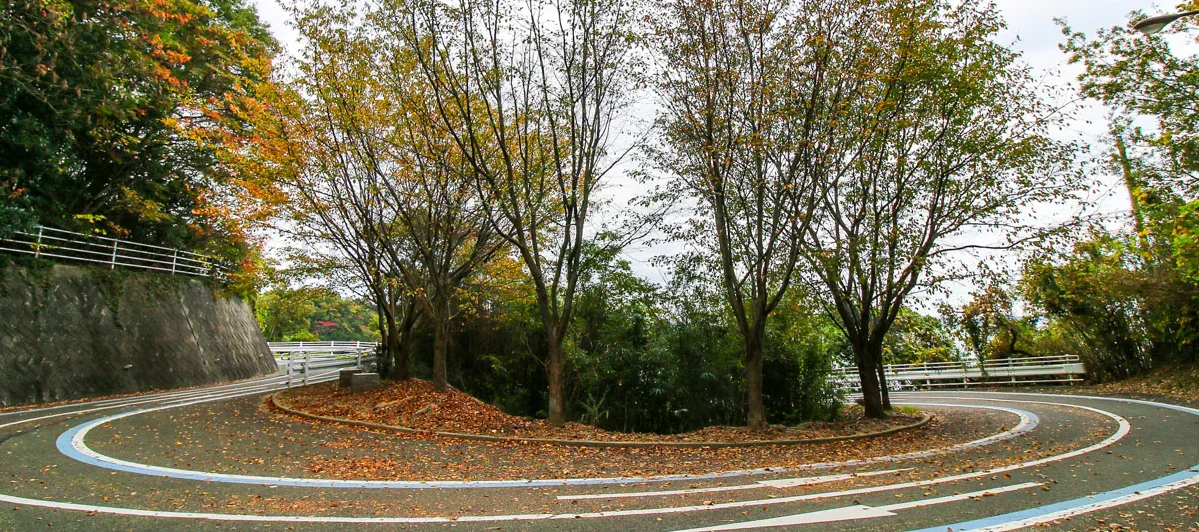
When to go Cycling in Kansai? A Guide to the Best Season
This is a beginner’s guide to the best season to cycle the Kansai region with a particular focus on Kyoto, Osaka, Hyōgo, Nara and Wakayama.
If you are thinking of a cycling trip to Kansai but you aren’t sure when to visit, or you want to know more about the weather conditions, then this post is for you.
For a reference while reading the blog, the annual weather averages around Osaka might come in handy.
Contents
Introduction
Similar to the way the Japanese love their food, the locals are extremely proud of their four distinct seasons, Spring, Summer, Autumn and Winter.
With many seasonal foods, crops and fauna, it’s easy to appreciate that the local’s pride of the seasons is almost synonymous with their love of seasonal dishes and flowers and gives a great insight into the essence of Japanese culture.
Early Spring Season
The Sakura (cherry blossom) is symbolic of this and reveals that the Spring time has finally arrived after the cold winter each year.

In Kansai, the Sakura tend to show their buds from mid-March as daytime temperatures start to creep up; and bloom around the first week of April, leaving much of the Japanese countryside under a veil of pink serenity.

It’s the perfect time to escape the cities, the tourist hotspots and JUST RIDE! It can still be a little bit cold in the shade and at night but with appropriate clothing for the season, then daytime rides can be quite comfortable in Kansai.
Late Spring and Early Summer Cycling
As mild mid-April showers wash away the blossoms, the mercury rises for arguably the best cycling conditions Kansai has to offer.

From late April, throughout May and into early June, the Kansai region is a cyclist’s paradise.
Coinciding with the Golden Week holiday period at the beginning of May, even the most fair-weathered of local cyclists will be found on the road.

The weather is generally warm and gentle until the rainy season starts from anytime ranging mid-June to mid-July.
Rainy Season
I use such a wide range here because historically speaking and based on pre-2015 data, June was traditionally ‘the month of the rainy season’.
However, over the last couple of years, we’ve seen great riding conditions in June for longer, and more heavier torrential rains in July.
Summer Heat and Humidity Season
One thing for sure is that after the rainy season comes the heat and humidity!
From the end of July and throughout August, the temperature is rarely below 32 degrees celsius during the day in Kansai, with heat stroke warnings and updates ‘a constant’ on the news and weather forecasts.
However, for those brave enough to tackle the summer heat, you are welcome to use our alfresco bathing facilities upon your return (the hose ???? )

There are some people who like the Summer in Japan but generally people find it too hot to be out on the bike under the midday sun.
One thing to note is that it always seems hotter than the temperature for the day. Viewed objectively, a 32 degrees day is hot, but a 32 degrees day in Kyoto can feel much hotter due to the humidity and lack of any sea breeze.
If you do plan to ride in July through August, then take precautions to avoid heatstroke. Dusk and dawn rides help avoid the midday heat.
Autumn Peak Cycling Season
With a slight drop in temperature and the arrival of September, we see the return of the fair-weathered locals.
The second cycling season is here.

The conditions are very similar to May but you’ll need to be on your guard as the typhoon season hits Asia between September and October. Recently the Typhoon season can start as early as August.
On to November, and my favourite month to ride with the traditional ‘Koyo’ (the changing of the leaves).
This autumn period is less celebrated than the Sakura is but in my view, in terms of natural beauty is on par with it. Rich autumn colours fill the countryside in layers with deep reds and golden browns.

The nights can be cold but the cooler day temperatures provide the perfect conditions for those long distance bike rides.
Winter Season
These conditions continue into early December but gradually the temperature drops and the trees are stripped bare.
With gloves and booties, riding can still be quite comfortable, but by now those colder refreshments and pit-stops have been replaced by hot drinks and udon to keep the engine warm.

A post ride trip to an Onsen or Sento, is always re-energising all-year round but in the Winter, warming up after the colder rides is a blissful experience.
Into January and February, except for the hard core and well-equipped then you’ll see a lot less local cyclists getting out.
The winter tends to be dry in the cities but snow falls in the hills and mountains, especially north east of Kyoto so do check the forecasts if you are planning to ride in Winter. It’s also better to stick to flat routes to avoid ice on descents.
Final Thoughts
The above is to give cyclists an overview of the weather conditions during the different seasons in Kansai.
One thing to note is that global warming is very much here, and the weather patterns are becoming increasingly erratic so we recommend keeping a close eye on the weather leading up to your trip and pack accordingly.
While we can’t guarantee the weather, if you aim for sometime during Spring or Autumn we can guarantee you’ll experience some truly outstanding moments on the bike. Likewise and for the ‘die-hards’, with suitable winter clothing and thorough route planning then this can be extended into the Winter months.
The feeling of winding through the mountains on a crisp autumn morning or passing under cherry blossoms as you cycle though the ancient capital of Kyoto will leave you smiling for days and reminiscing about your trip for years.
Any questions feel free to get in touch and if you’ve cycled Japan before let us know about your experience in the comments below. We’d love to hear from you!
Stay safe and happy cycling!
